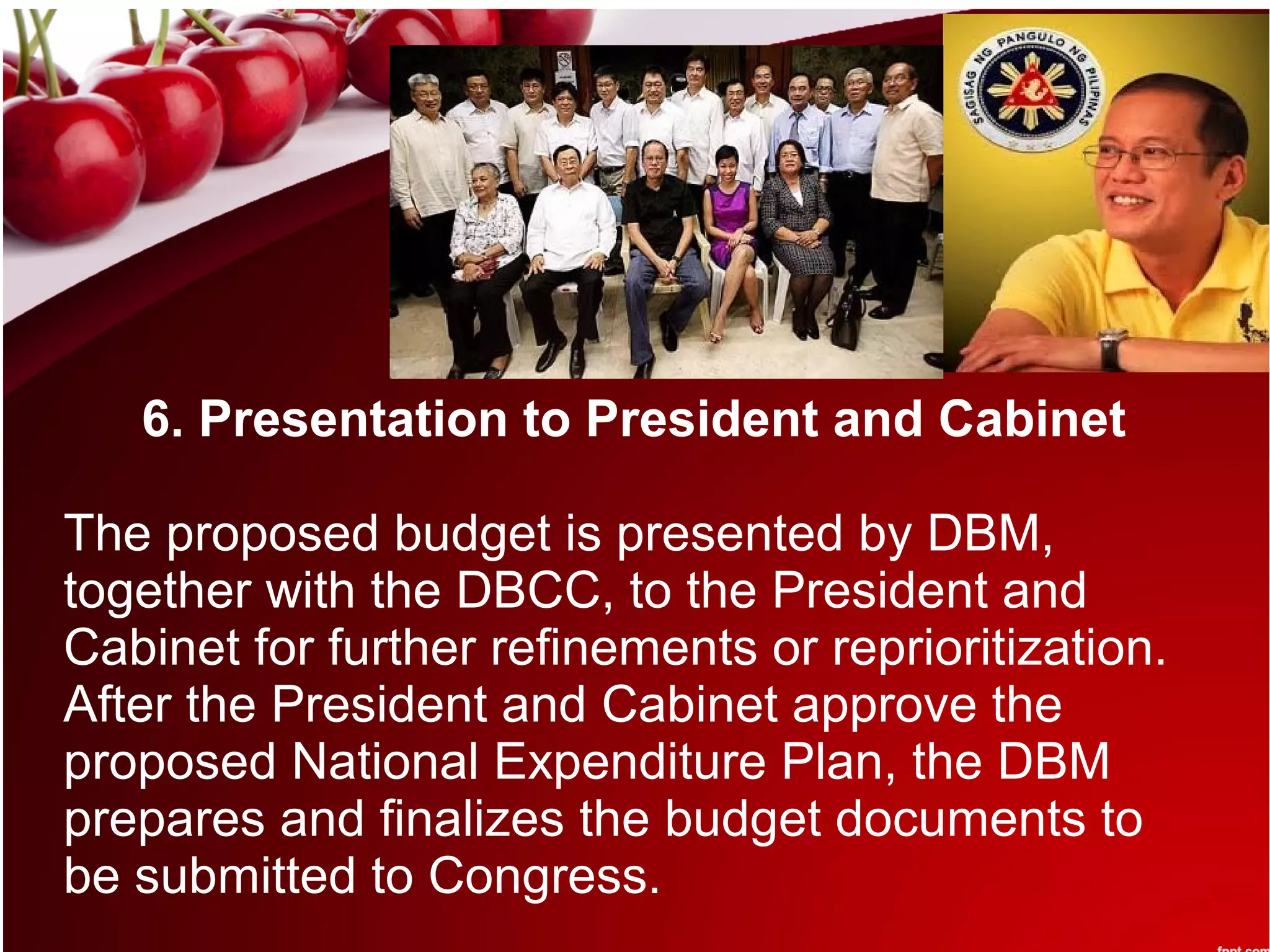This document provides an overview of the Philippine government budgeting process. It discusses key concepts like budget preparation, authorization, execution, and accountability. The major steps in budget preparation include the budget call, stakeholder engagement, technical hearings, and executive review. The budget then becomes law through legislation by Congress. It is implemented through allotment and cash releases, and agencies are held accountable by submitting budget accountability reports. Adjustments may be made to address changes in laws, macroeconomic parameters, or resource availability.








































































